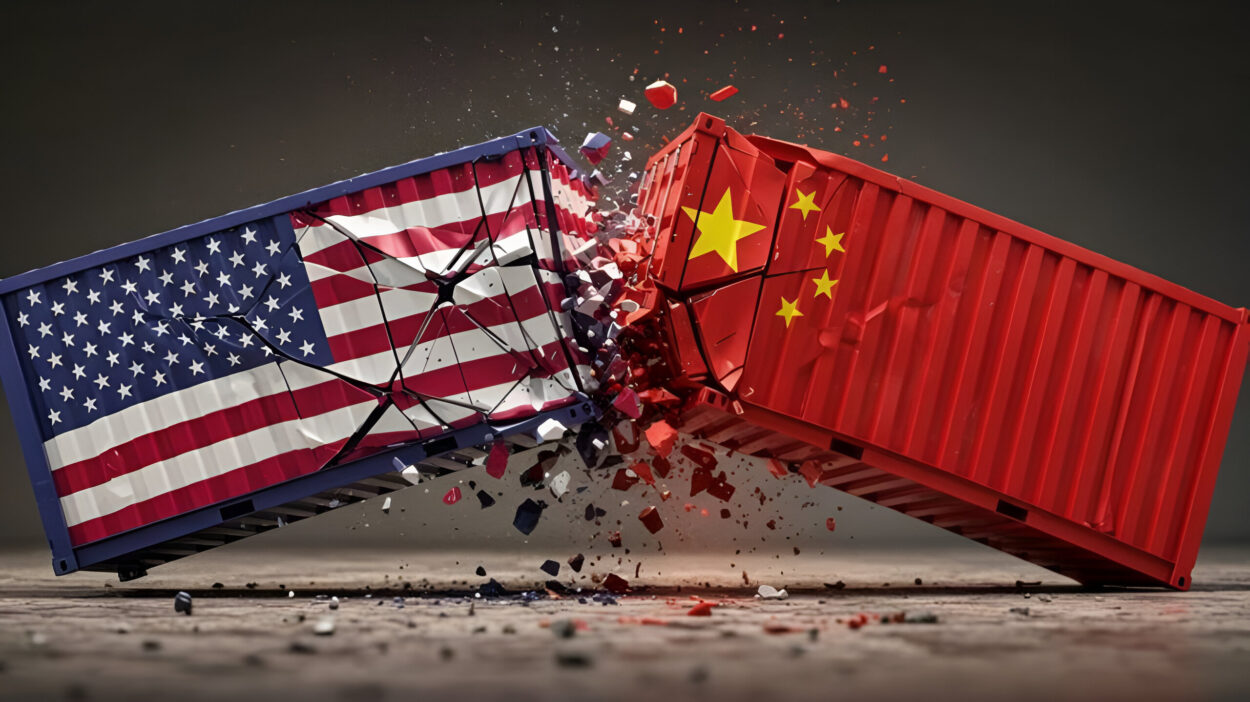Trade between China and the United States, two titans that dominated the world economy for many years, is currently in a precarious state. Experts caution that due to exorbitant tariffs on both sides, we may be on the verge of a total collapse in trade, which would have disastrous repercussions for both economies and the entire world.
Tariffs Reach All-Time Highs
China has retaliated with 125% tariffs on American goods, while the United States is currently putting a 145% tariff on Chinese imports. These are only the base rates; additional taxes are imposed on particular goods, such as steel, electronics, and agricultural products.
These rates are effectively a trade wall, according to trade experts. Yeling Tan of Oxford University states, “The tariff rates are now so high as to be prohibitive of most direct bilateral trade.”
According to China’s finance ministry, American products are no longer competitive in the Chinese market at these prices.
The Dismantling of an International Business Partnership
A symbiotic relationship existed between the United States and China for many years. American consumers purchased high-tech devices and holiday decorations made in China. However, that relationship is now deteriorating.
China imported $143.5 billion worth of goods from the United States in 2024, compared to $438 billion from the United States. However, as both parties search for alternatives, that difference might close quickly with the current tariffs in place.
Both nations are further complicating matters by imposing non-tariff obstacles, such as restricting the release of American films in China, and by threatening more action, such as the United States potentially targeting nations that use Venezuelan oil, which might have an impact on China.
The “China Plus One” Transition Is in Danger
Known as “China Plus One,” several Western businesses have moved their manufacturing to Vietnam, India, and Mexico in an effort to lessen their dependency on China.
However, Trump’s trade team is also attempting to thwart this workaround. These same nations were the focus of his now-paused “Liberation Day” tariffs. Even these options might become too expensive for companies if the tariffs are reinstated.
China’s Reaction: Prepared for the Future
China isn’t stagnating, despite the United States’ claim that it is more vulnerable since its economy has historically depended on American consumers.
Actually, just 15% of Chinese exports now reach the United States, compared to 19% in 2018. Beijing has been establishing connections with other parts of the world, such as Southeast Asia, and sourcing items from nations like Brazil and Australia that it formerly imported from the United States.
China’s economy is expected to suffer, according to economists, and big banks have already lowered their growth projections for 2025. However, Chinese authorities are refusing to back down, stating that if the U.S. keeps up the trade war, they will “fight to the end.”
Additionally, there is a cultural component. According to Dexter Roberts of the Atlantic Council, “people in China really feel like they can ‘eat bitterness’—persist through hardship.” That gives China hope that it can withstand American pressure.
The United States also feels the heat.
The United States is not exempt either. Already, the tariffs are causing stock markets to tremble, bond yields to rise, and the value of the dollar to decline. It is anticipated that after these tariff effects fully take effect, inflationary pressure would increase.
Even American businesses are becoming anxious. Many might not make it through such harsh trading conditions. Already, some manufacturers and merchants are finding it difficult to adjust.
In an effort to lessen the harm and maybe pave the way for negotiations with China, the White House recently postponed some duties, particularly on electronic products like laptops and cellphones.
Can This Be Resolved?
Both nations have shown hints of being amenable to negotiation despite the tough tone. The catch is that both parties want the other to move first.
A total decoupling—in which trade between the United States and China is stopped entirely—would be very harmful, according to economists. Instead of the current triple-digit tariffs, it is hoped that all parties will eventually agree to lower them to more reasonable levels, perhaps 15% to 30%.
Even a rollback, however, would not bring trade back to its pre-2024 levels, much less the more hospitable times prior to 2018.
A Perilous Worldwide Transition
The world might experience more than just economic difficulties if this trade war continues to worsen. The likelihood of wider disagreement may increase if there are fewer commercial relationships.
According to Roberts, “the existence of trade relationships actually lowers the risk of conflict.” “Tenseness may increase if nations isolate themselves and sever these connections.”
In summary, everyone—from companies to consumers to governments—stands to suffer if the United States and China cease doing business with one another.
“A collapse of direct bilateral trade will hurt both countries—and make the world a much more volatile place,” as Yeling Tan states.
